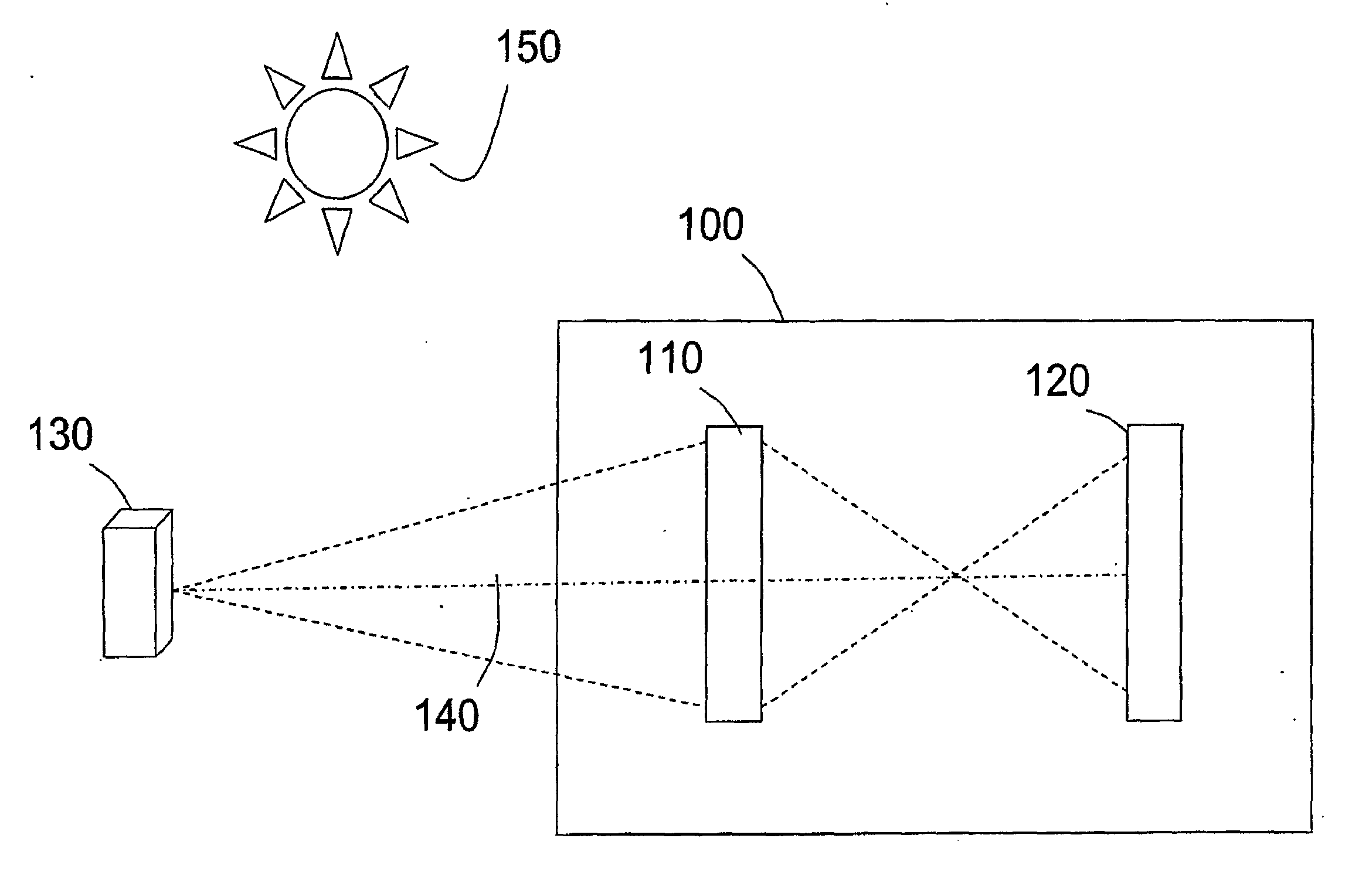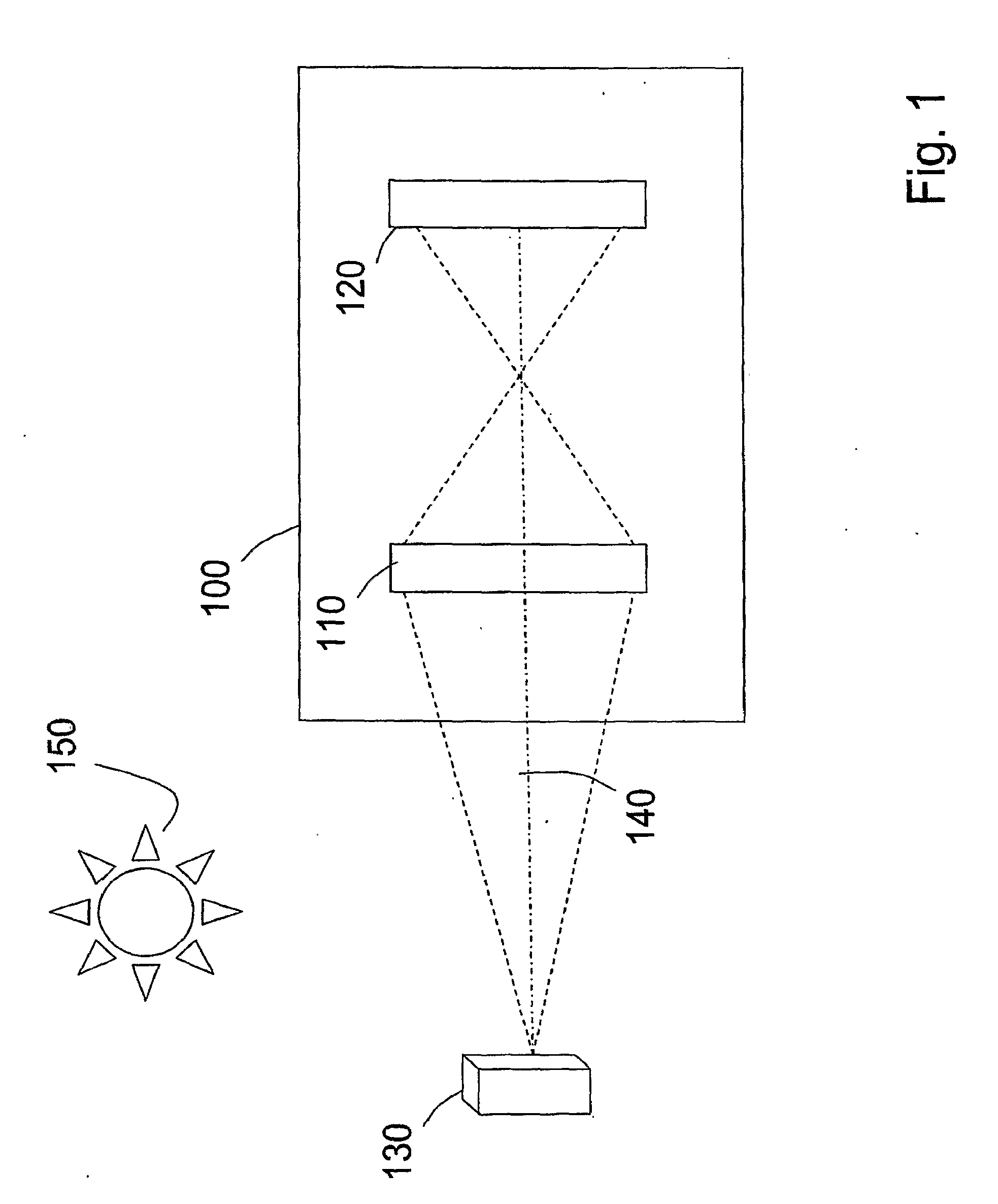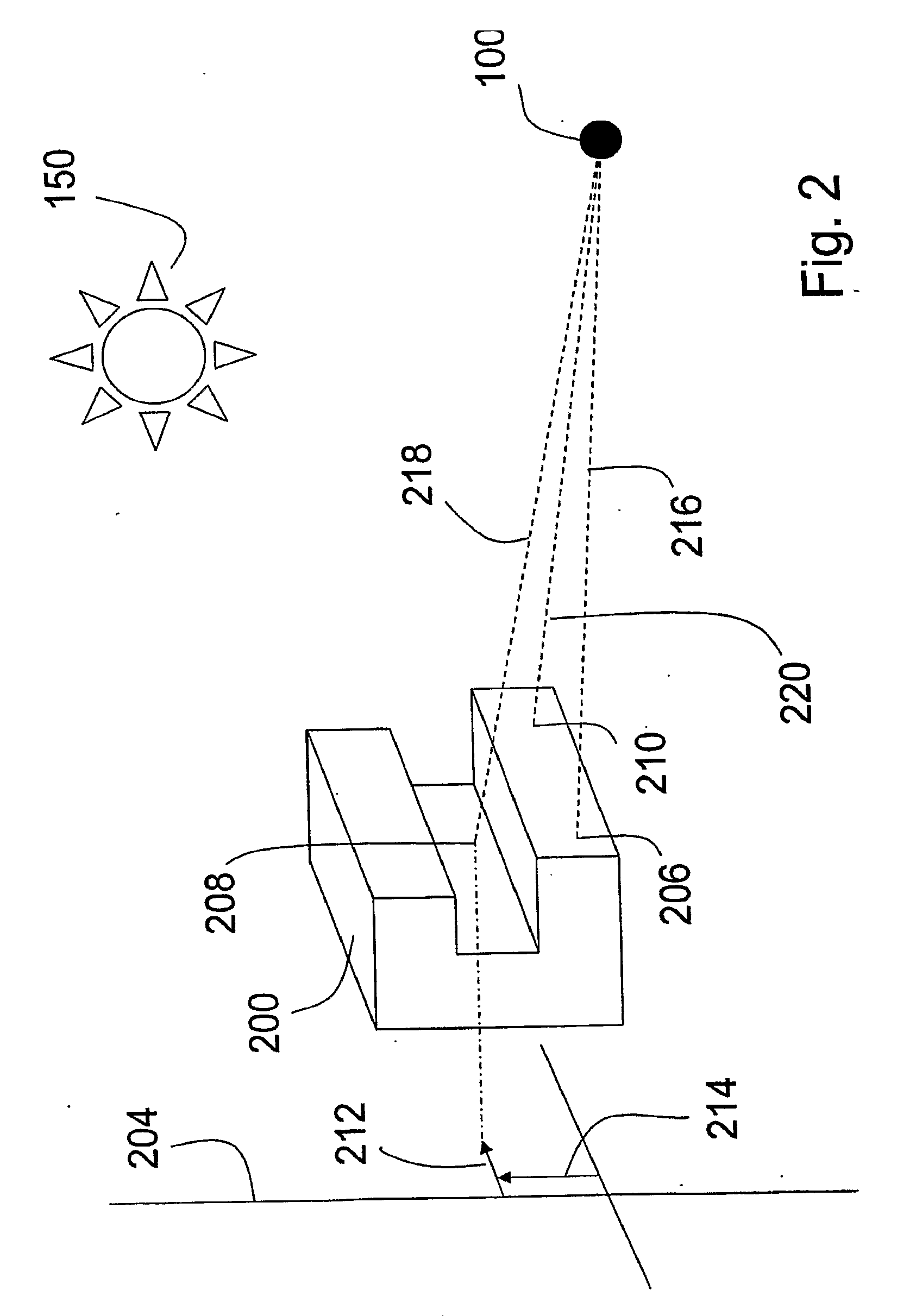System, apparatus and method for extracting image cross-sections of an object from received electromagnetic radiation
- Summary
- Abstract
- Description
- Claims
- Application Information
AI Technical Summary
Benefits of technology
Problems solved by technology
Method used
Image
Examples
first embodiment
[0153]FIG. 1 is a block diagram of an optical apparatus 100 according to the present invention. The optical apparatus 100 is configured to capture a three-dimensional information of an object 130, and the optical apparatus 100 includes an optical assembly 110 and an image capture assembly 120. In particular, the optical assembly 110 receives light from the object 130 along a receiving optical axis 140. For example, the optical assembly may receive light from the sun 150 that is reflected or scattered by reflecting surfaces on the object 130. The received light may be polychromatic and incoherent light, such as reflected sunlight. In addition, the light from the object may be fluorescent light or chemiluminescent light emitted by the object. The optical apparatus 100, in this embodiment, does not illuminate the object but passively receives light from the object.
[0154]The optical assembly 110 transforms the received light according to a transformation described below, and transmits t...
fourth embodiment
[0271]FIG. 27D is a block diagram of an apparatus configured to capture different cross sections of an object 130, without moving either the object 130 or the apparatus 1400. In this embodiment, the effective focal length of the correlator's input lens 302 is varied using an electrically controlled diffractive lens (ECDL) 2718, which may be implemented using a SLM. Alternatively, lens 302 may be replaced by the ECDL 2718. In this embodiment, holograms may be captured using various focal lengths of the correlator's input lens or ECDL, with each hologram corresponding to a different cross-section.
[0272]Although different cross-sections may be obtained by changing the input plane of the object or the input focal plane, different cross-sections may alternatively be obtained by changing a location of the output plane.
fifth embodiment
[0273]FIG. 28A is a schematic and block diagram of an apparatus configured to capture different cross sections of an object 130, by moving a location of image capture assembly 1406 with respect to incoherent correlator 1402. In this example, a motor 2806 controls a movable platform 2802, using gear 2804. The platform 2802 is configured to move image capture assembly 1406 along axis 2808. Plural holograms corresponding to plural cross-sections may be obtained at each different position of image capture assembly 1406 along axis 2808.
PUM
 Login to View More
Login to View More Abstract
Description
Claims
Application Information
 Login to View More
Login to View More - R&D
- Intellectual Property
- Life Sciences
- Materials
- Tech Scout
- Unparalleled Data Quality
- Higher Quality Content
- 60% Fewer Hallucinations
Browse by: Latest US Patents, China's latest patents, Technical Efficacy Thesaurus, Application Domain, Technology Topic, Popular Technical Reports.
© 2025 PatSnap. All rights reserved.Legal|Privacy policy|Modern Slavery Act Transparency Statement|Sitemap|About US| Contact US: help@patsnap.com



